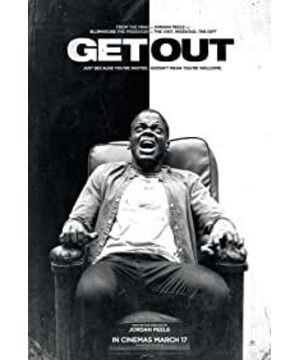The cost is 4.5 million US dollars, and it easily exceeded 100 million in 16 days. The new director Jordan Peel’s debut film "Escape from Breakthrough Town" won the box office, and there is no lack of word-of-mouth coronation. As a black director, he can be said to use one. A small-cost horror film became the real "dark horse" of 2017.
Small-cost horror movies are widespread in the United States, and the tricks they use are just "horror cabin", "plasma", "scientific mutation" and other horror elements, and "Escape from Breaking Death" can be regarded as superimposing these elements and borrowing from plot reversal. The "Soul Replacement" of "Master Key" is used; "The Cabin in the Forest" is used in the story format; and the horror subject is "Stoke" by Park Chan-wook.
But if it is just the sum of the common American horror film factors, the film will not cause such a wave. The reason why it can be favored by theater audiences is that the ubiquitous "race" factor in the film cannot be ignored. From the prologue of the film, black people were accidentally knocked unconscious and kidnapped on the street, which clearly conveyed a signal: "Black people are weak."
The movie is about a black photographer who visits his girlfriend's parents with his white girlfriend. During the period, he is deeply in danger and finally escapes to heaven. This story mode is quite familiar to us. It is a "risk-adventure-exit". story. Different from the image of black people in general American movies, in the film, black people become a weak person, rather than a violent street gangster. There is no lack of pain in the memories. This kind of three-dimensional character is quite rare in the previous American horror movies.
This film spares no effort in the creation of the theme of "race". While driving, the police deliberately checked the male protagonist’s ID card; when he went to his girlfriend’s house, he saw the “white master, black servant” model; the girlfriend’s father told about it. Father’s career as an athlete, and Hitler’s concept of race; until a lot of white friends came to visit, only the male protagonist and a black guest, and these, this thriller has always been surrounded by strong "racial hostility."
When the final mystery is revealed: the girlfriend’s family specializes in trapping blacks as a "body sustenance" for transferring white consciousness, thereby realizing the heroine's grandfather's concept-"condensation", which means that people's consciousness will always exist and can be changed. Body, but can’t give up soul. This concept is the same as in 2005's "Master Key", except that "Master Key" uses witchcraft, while the film uses scientific methods.
But one question has to be raised here: Why does this "body trust" only use black people and not other races? In the chat between the male protagonist and a crowd of white people, it is not difficult to hear the reasons: "dark skin is the most popular", "blacks are the sexiest", "strong body" and so on. On the surface, this is a kind of praise for the black body, but in fact it is a kind of discrimination in disguise. The subtext is: "The black body is excellent, but the brain and consciousness of our white people are the most important."
"Transfer consciousness". This process is realized by scientific means in this film. However, in the traditional Chinese mystical culture, this is called "ghost upper body".
Let an outsider break into his consciousness, manipulate his behavior, and become a puppet. Not only does he lose his control, but he is also imprisoned in the boundless prison of consciousness. This sense of helplessness and fear comes from The racial psychology of blacks for hundreds of years.
From the beginning of the 15th century to the end of the 18th century, the 300-year-long "black slave trade" constituted an indispensable racial pain for blacks. In the United States, although this system has been abolished since Lincoln promulgated the "Proclamation on the Emancipation of Black Slaves" in 1862, the long-standing "racial" high pressure in the United States has not completely disappeared. African-Americans, this identity, at least has several cultural factors: in history, they were trafficked to "outside places" by "outsiders", and in the "outside place" of America, they themselves became "foreigners". In American society, blacks have become the "other" relative to whites. The so-called "racial film" cannot escape this kind of racial psychology.
In addition to the scene where the hero fell into a "pit of consciousness", the other is his encounter at a white party. Interestingly, the male protagonist does not directly observe the white people at the party with his eyes, but uses a camera as a medium for framing. This design undoubtedly has two intentions: the male protagonist is psychologically isolated at this time, so he dare not look directly; The other is the secondary identity of black people in this white place. He does not enjoy equal "mutual scrutiny", but only has the identity of "gazing" and "being stared at."
The arrangement of many black perspectives and black psychology is the greatest significance of the film, and for the movie theater audience, such a plot design is not without "satisfaction". On the one hand, as the controller of social discourse, white people have the right to deal with the black body; on the other hand, it is the "narcissism" complex caused by the exaggeration of the black body. At the same time, the "persecution" in the film undoubtedly caters to The scarred psychology of many black American audiences.
This article first published the public account "Ruiying vanguard"
For draft or reprint, please Douyou
View more about Get Out reviews











